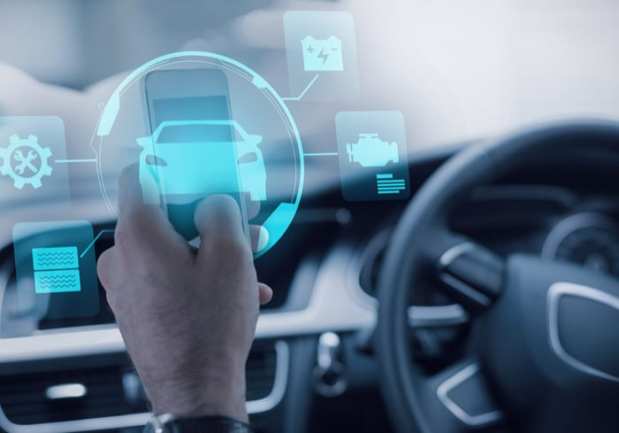How Connected Consumers Order Ahead During Their Commutes

In the age of smartphones, tablets and voice assistants, the morning or evening commute provides a myriad of opportunities for consumers to interact with the world. Those possibilities also extend to commerce, with connected devices paving the way for new shopping opportunities while consumers are on the road.
According to the PYMNTS Digital Drive Report, 73 percent of today’s connected commuters use a host of devices during their drives to facilitate purchasing activities. And that figure marks an increase from the almost two-thirds – or 66.4 percent – of commuters – who did the same in 2017. Currently, 58.7 percent of those commuters connect to the internet through their smartphones.
From SPOT to Starbucks, online platforms and retailers are providing consumers with new ways to place orders or make purchases from the car. These are some of the ways consumers are using their devices to make purchases during their commutes – and how digital innovations could help their shopping experiences:
Commuters find available parking spots 64.9 times a year. Services such as SPOT allow users to find a place to park, as the legal owner of an unoccupied parking spot makes it available for the app’s users. SPOT serves cities including Los Angeles, Miami and Philadelphia, per a report last year. While the platform enables users to rent spaces for as long as a month, the vast majority of the firm’s business is designed around hourly uses. SPOT Founder and CEO Braden Golub told PYMNTS.com in an interview last March, “On the platform, about 92 percent of our transactions are hourly. We have actually worked very hard pushing that from early on.”
Commuters order coffee and pick it up in a restaurant 55.3 times a year. And consumers are turning to mobile apps to order coffee. In July, it was reported that Starbucks’ mobile order tool comprised 13 percent of U.S. company-operated transactions. By comparison, mobile ordering and payment accounted for 9 percent of those transactions in the fiscal third quarter of 2017. More recently, news came this week that Starbucks is updating its rewards program and rolling out new redemption options beginning in mid-April. Customers who link their loyalty membership to a prepaid card or Starbucks Rewards Visa credit card will not have to worry about expiring points.
Commuters order food and pick it up in a restaurant 42.8 times a year. Digital innovations are helping consumers pick up their orders. Minnow, for instance, provides pickup pods that allow diners to ditch the line at the counter. Customers first place their orders through a restaurant’s website or app, then receive a notification when the order is ready. They can then use an app to open the locker-like device. “It’s all done through a wireless locking mechanism that is controlled by a smartphone app,” Minnow co-founder and CEO Steven Sperry told PYMNTS.com in a November interview.
Commuters order an item to pick up at a store 42.8 times a year. Retailers are tapping into buy-online-pickup-in-store (BOPIS) offerings for consumers. Fast fashion apparel retailer rue21 recently announced it plans to bring the option to more than 700 locations. Shoppers can see that a given item is available at the store closest to them, make a purchase online and pick up the product while avoiding shipping fees. The company noted its BOPIS feature “allows for enhanced online shopping, as well as the optimized in-store experience with personalized attention and real-time customer service.”
Commuters order groceries to pick up 35.7 times a year. To serve these shoppers, technology platforms are rolling out pickup options. Online grocery firm Instacart, for instance, announced the national expansion of its grocery click-and-collect service, called Instacart Pickup. With expanded delivery and/or pickup options, shoppers can order via Instacart and pick up the groceries at retailers. Instacart Chief Business Officer Nilam Ganenthiran said in a press release at the time, “We want to make grocery shopping effortless by helping our customers get the groceries they need from the retailers they love. Our customers want choice, and we’re excited to now offer the pickup option they’ve been asking for.”
From Instacart to Starbucks, technology providers and retailers are enabling mobile shopping. And consumers are tapping into these offerings on their rides: 99 million connected commuters now drive billions of dollars into the commuting commerce ecosystem by buying groceries and coffee, amid a myriad of purchases.
